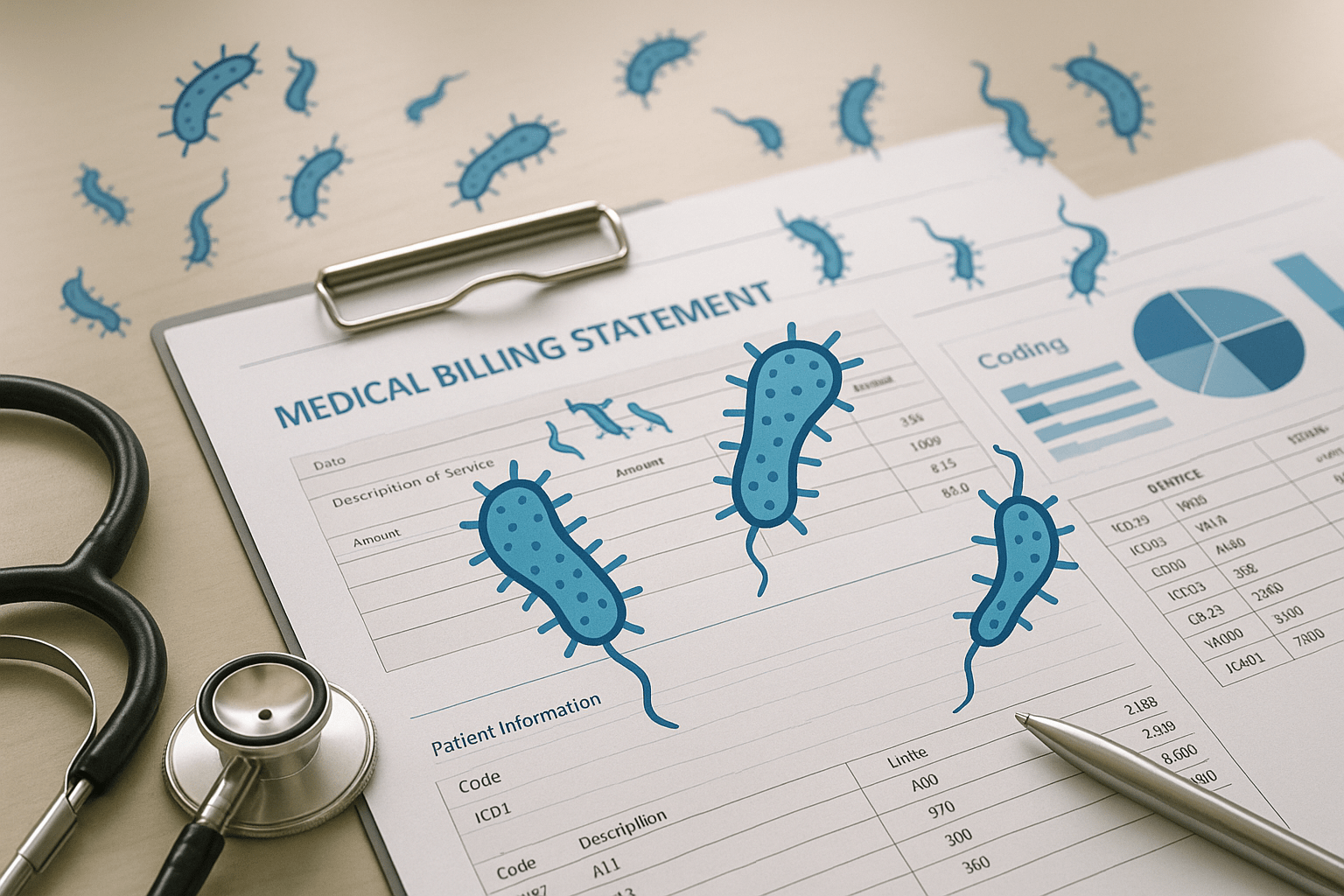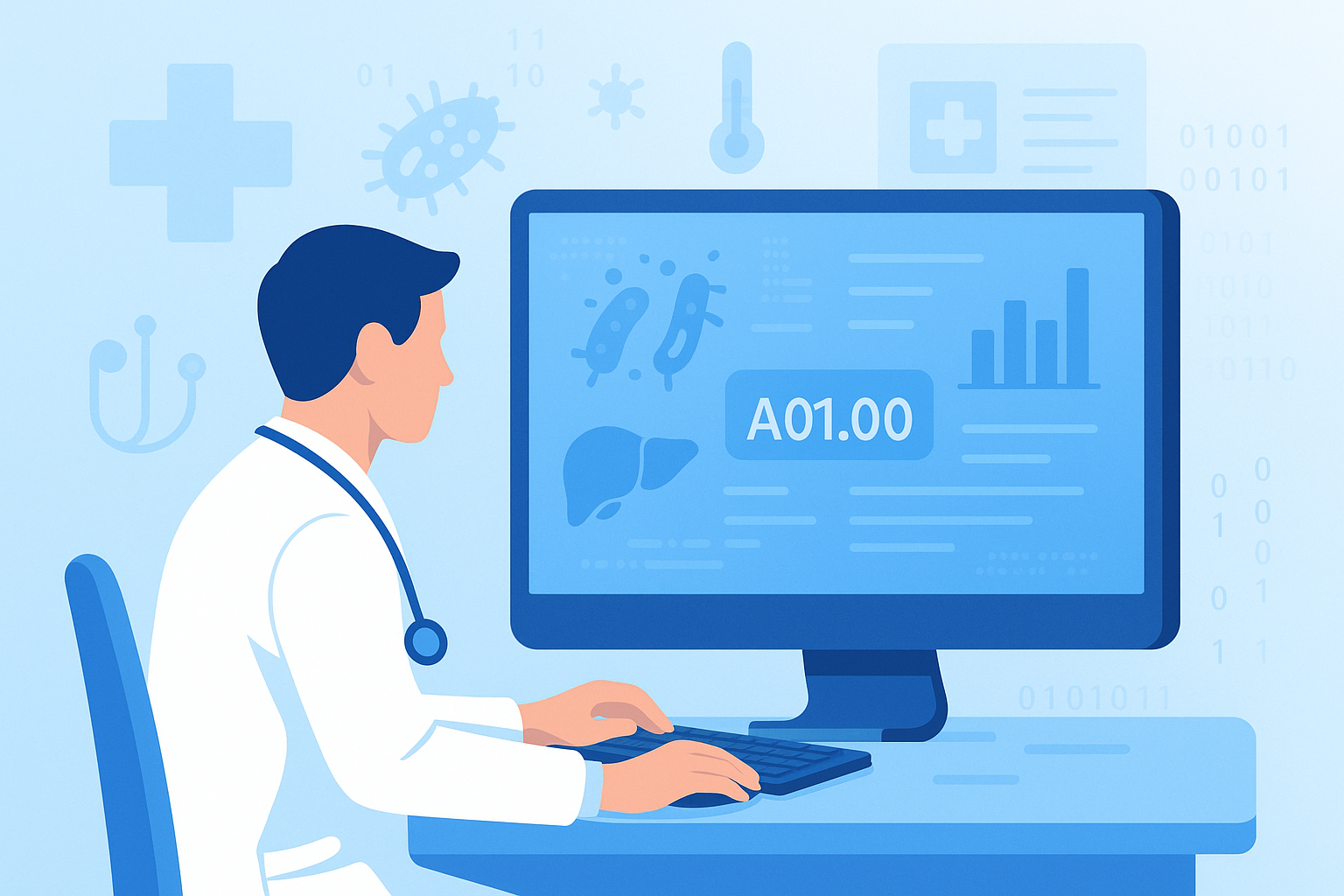ICD-10 Code A00.1: Understanding Cholera due to Vibrio cholerae O1, Biovar Eltor
The cruise ship’s medical bay was overwhelmed. What started as a few cases of severe diarrhea quickly spread to dozens of passengers. The ship’s doctor knew this wasn’t typical norovirus. The dehydration was happening too fast, way too fast. When the microbiologist identified Vibrio cholerae O1 biovar eltor, suddenly this wasn’t just a ship problem anymore. It was a CDC notification waiting to happen.
This is where ICD-10 code A00.1 comes into play. And trust me, getting this code right matters more than you might think.
What Exactly is ICD-10 Code A00.1?
Let’s break this down in plain English. A00.1 is the medical billing code for cholera caused by a specific strain of bacteria called Vibrio cholerae O1, biovar eltor. I know that sounds like a mouthful, but stick with me.
The code structure itself tells a story. The “A00” part means we’re dealing with cholera in general. That little “.1” at the end? That’s what makes all the difference. It tells us we’re dealing with the El Tor strain specifically, not the classical strain (that would be A00.0) or some unspecified type.
Now, you might be wondering why we need to be so specific. Can’t cholera just be cholera? Well, not really. The El Tor strain has some unique characteristics that affect everything from how it spreads to how doctors treat it to how public health officials track outbreaks.
The Disease Behind the Code
Here’s what makes the El Tor strain special, and I don’t mean special in a good way. This particular version of cholera has been the dominant strain causing outbreaks worldwide since the 1960s. It actually kicked off what scientists call the seventh cholera pandemic, which is still ongoing today.
The El Tor strain is sneakier than its classical cousin. It can survive longer in the environment, which means contaminated water sources stay dangerous for extended periods. It also produces more asymptomatic carriers. These are people who have the bacteria in their system and can spread it to others, but they don’t feel sick themselves. Imagine how much harder that makes it to control an outbreak.
When someone does get sick with El Tor cholera, the symptoms hit hard and fast. We’re talking profuse watery diarrhea that people often describe as looking like rice water. Severe vomiting follows close behind. The real danger is how quickly dehydration sets in. Without treatment, a person can lose liters of fluid in just hours. This isn’t your typical stomach bug that makes you feel miserable for a day or two. This is life threatening.
Healthcare providers need to identify the specific strain because treatment protocols can vary slightly, and more importantly, public health responses depend on knowing exactly what they’re dealing with. When a lab confirms El Tor, epidemiologists immediately start looking at water sources, tracking contacts, and coordinating with international health agencies if needed.
When Do Healthcare Providers Use Code A00.1?
Picture this scenario. A patient shows up in the emergency department with severe diarrhea and vomiting. They’re showing signs of serious dehydration: sunken eyes, decreased skin turgor (that’s when you pinch the skin and it doesn’t bounce back), and they’re producing very little urine.
The ER doctor takes a history and learns the patient recently returned from an area where cholera is endemic. Or maybe they were at that wedding reception where the seafood wasn’t properly handled. Or they were on that cruise ship where the water filtration system failed.
The doctor orders a stool culture. This is crucial. You cannot use code A00.1 without laboratory confirmation. The lab doesn’t just identify cholera. They go further and determine the serogroup (O1 in this case) and the biovar (eltor). Only when all three pieces are confirmed can the medical coder accurately assign A00.1.
Here’s where coders sometimes trip up. If the lab report just says “cholera” without specifying the strain, you cannot use A00.1. You’d have to use A00.9 for unspecified cholera. If it says “classical cholera” or “Vibrio cholerae O1 biovar cholerae,” that’s A00.0, not A00.1. The specificity matters tremendously.
Documentation needs to be crystal clear. The physician’s notes should reference the laboratory findings explicitly. Something like “Patient diagnosed with cholera secondary to Vibrio cholerae O1, biovar eltor per stool culture dated [specific date].” That kind of documentation makes coding straightforward and defensible.
Why This Code Matters for Medical Billing
Let’s talk money for a minute, because accurate coding directly affects reimbursement. Cholera cases, especially those caused by specific identified strains, typically require intensive treatment. We’re talking IV fluid resuscitation, sometimes in massive volumes. Electrolyte replacement. Antibiotics like doxycycline or azithromycin. Close monitoring. Possible ICU admission if the dehydration is severe enough.
Insurance companies look at that A00.1 code and understand why the hospital bill includes all these interventions. The specificity justifies the level of care provided. If you code it as A00.9 (unspecified cholera) when you actually have documentation for A00.1, you’re underselling the specificity of the diagnosis. While the reimbursement might not differ dramatically between A00.1 and A00.9, the specificity demonstrates quality documentation and reduces the likelihood of audits or claim denials.
There’s also the matter of public health reporting. Cholera is a notifiable disease in most jurisdictions. When A00.1 gets coded, it often triggers automatic reporting mechanisms to state and federal health departments. This isn’t just bureaucracy. This is how we track disease patterns, identify outbreaks early, and prevent wider spread.
Treatment protocols can vary slightly based on the strain. The El Tor strain has shown different antibiotic susceptibility patterns in various outbreaks over the years. When a provider sees A00.1 on a patient’s chart, they know to check the latest antibiotic resistance data for El Tor specifically, not just use generic cholera treatment guidelines.
The Public Health Perspective
Here’s something most people don’t realize. Every time someone codes A00.1, they’re contributing to a massive global surveillance system. The World Health Organization tracks cholera outbreaks worldwide, and they need to know which strain is causing problems where.
The El Tor strain has different epidemiological patterns than classical cholera. It tends to cause longer outbreaks with more asymptomatic carriers. It survives better in brackish water, which affects how it spreads in coastal regions. It has shown the ability to establish itself in new geographic areas where cholera wasn’t previously endemic.
When health officials see a cluster of A00.1 codes pop up in a particular area, alarm bells start ringing. Is this a new outbreak? Is there a contaminated water source? Did someone bring it back from international travel? Should neighboring communities be warned? Should water testing be ramped up?
Recent decades have seen El Tor cholera spread to areas that were cholera-free for over a century. The 2010 outbreak in Haiti, which began after the earthquake, was caused by the El Tor strain. It lasted for years and affected hundreds of thousands of people. Every single one of those cases should have been coded with A00.1, creating a data trail that helped international responders understand the scope and progression of the outbreak.
Climate change is actually making cholera tracking more important. Warming ocean temperatures can affect where Vibrio bacteria thrive. Areas that never worried about cholera before might need to start paying attention. The data from codes like A00.1 help predict where the next outbreaks might occur.
Practical Tips for Medical Coders
Okay, let’s get practical. You’re sitting at your desk, reviewing a chart, and you see cholera mentioned. What do you need to look for?
First, find the lab report. This is non-negotiable. Look for specific language about the strain. You need to see Vibrio cholerae O1, biovar eltor, or V. cholerae O1, biovar eltor, or some clear variation of that. If the report just says “cholera positive” or Vibrio cholerae, you don’t have enough information for A00.1.
Second, check the physician’s assessment and diagnosis. They should have incorporated the lab findings into their diagnostic statement. If there’s a mismatch between what the lab found and what the physician documented, you need to query before coding.
Third, be aware of related codes you might need. Many cholera patients develop severe dehydration, coded with E86.0. If they went into hypovolemic shock, you’re looking at R57.1. These secondary codes help paint the full clinical picture and support the intensity of treatment provided.
Here’s a common mistake to avoid. Sometimes labs will report multiple findings as they run tests. They might detect Vibrio cholerae O1 but initially not specify the biovar. Then a day later, after additional testing, they confirm it’s eltor. Make sure you’re using the most complete lab results available, not the preliminary findings.
Another pitfall: assuming all O1 cholera is El Tor. It’s usually a safe bet these days since El Tor is dominant globally, but classical cholera still exists. If the lab specifically identifies it as classical (biovar cholerae), that’s A00.0, not A00.1.
When in doubt, query the physician. A simple question like “The lab report indicates Vibrio cholerae O1. Can you clarify if this is biovar eltor or biovar cholerae?” takes thirty seconds and prevents coding errors that could trigger audits months down the line.
Keep your coding resources updated. While cholera codes don’t change frequently, guidance on documentation requirements and coding best practices does evolve. The CDC and WHO regularly update their cholera surveillance definitions, which can affect how physicians document cases, which in turn affects how you code them.
Bringing It Back to the Cruise Ship
Remember those cruise passengers from the beginning? Once the CDC got involved and the El Tor strain was confirmed, the response kicked into high gear. Every sick passenger needed to be properly coded with A00.1. Contact tracing began immediately. The ship’s water system was shut down and tested. Neighboring ports were notified.
The accurate coding did more than just handle billing. It created an official record of an outbreak. It allowed epidemiologists to track the source back to contaminated seafood loaded at a particular port. It prevented the same contaminated supply from reaching other ships. It potentially saved hundreds or thousands of other people from getting sick.
That’s the real power of precise medical coding. It’s not just about getting paid correctly, though that certainly matters. It’s about creating accurate health data that protects communities, tracks disease patterns, and helps us respond to threats more effectively.
So the next time you’re coding a cholera case and you take that extra minute to verify whether it’s A00.0, A00.1, or A00.9, remember you’re doing more than paperwork. You’re contributing to a global health surveillance system that’s been tracking one of humanity’s oldest diseases. And in our interconnected world, where someone can travel from a cholera hotspot to your hometown in less than 24 hours, that surveillance matters more than ever.
Getting code A00.1 right isn’t just good coding practice. It’s good medicine.





